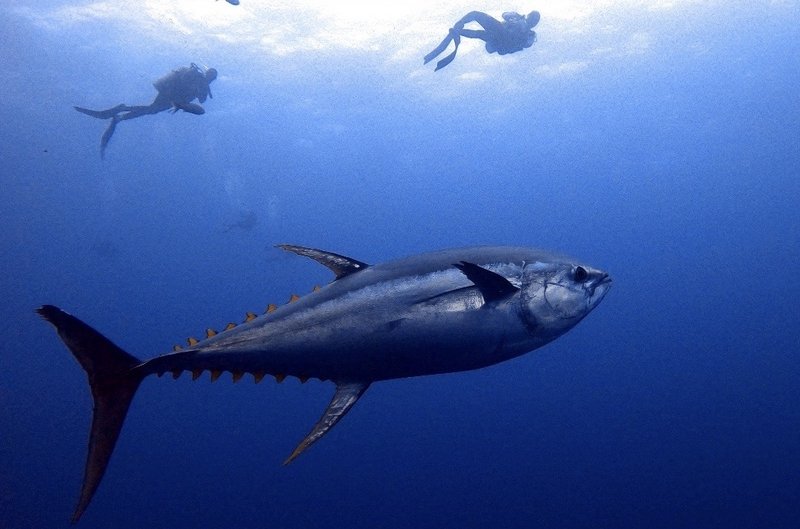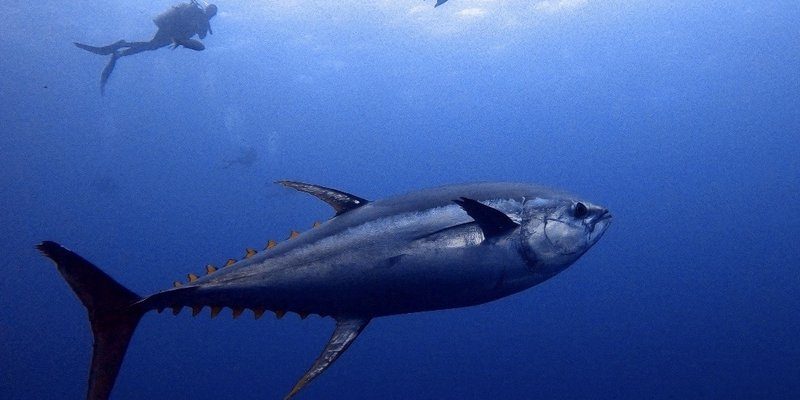
Yellowfin tuna, known for their speed and striking appearance, inhabit some of the richest waters of the world. Understanding where they’re found can help us appreciate their role in the marine ecosystem and maybe even influence your next fishing trip. So, let’s dive into the fascinating world of yellowfin tunas, exploring their habitats and how they thrive in different environments.
The Open Oceans: A Tuna’s Paradise
Yellowfin tunas primarily dwell in the open oceans, particularly in tropical and subtropical waters. You’ll find them swimming in the Atlantic, Indian, and Pacific Oceans. These fish prefer areas where the water temperature is warm, usually between 70°F to 85°F (21°C to 29°C). But don’t let that fool you—they’re not just lounging around in shallow waters. In fact, yellowfin tunas can be found at depths ranging from 300 to over 1,000 feet (90 to 300 meters) during the day.
Here’s a fun fact: yellowfin tunas are known for their impressive speed, capable of reaching up to 50 miles per hour (80 km/h). This speed helps them evade predators and chase down prey. So, if you’re out there fishing, you might want to bring your fastest gear!
Why the Open Ocean?
The open ocean provides yellowfin tunas with a rich supply of food, mainly consisting of smaller fish and squid. They are opportunistic feeders, meaning they’ll eat whatever is available, which is why schools of fish often attract them. Think of it like going to an all-you-can-eat buffet; if something delicious is on the line, they’re going to dive in!
Moreover, the vastness of the ocean allows them to migrate and avoid overfishing in heavily populated areas. These movements can sometimes span thousands of miles, making yellowfin tunas true adventurers of the sea.
Coastal Regions: Where Tunas Take Shelter
While yellowfin tunas are often found in the open ocean, they also venture into coastal waters. Here, they can find shelter and food in various habitats, like reefs and upwellings. These regions provide a unique environment where younger tunas can grow and thrive.
You might be surprised to learn that yellowfin tunas often school with other species, including skipjack and bluefin tunas. This social behavior can help them hunt more effectively, as a group can corral their prey better than a lone swimmer. It’s like a team of friends hitting the beach together—safety in numbers, right?
Upwelling Zones: Nutrient-Rich Havens
Upwelling zones along coastlines are particularly significant for yellowfin tunas. These areas occur when deep, nutrient-rich waters rise to the surface, creating a feeding frenzy for many marine species, including tuna. You might find them near the continental shelf, where the warm and cold waters meet, creating a perfect spot for a tuna party!
Fishing Grounds: Hotspots for Tuna Enthusiasts
If you’re an angler, you might be curious about the best places to catch yellowfin tuna. Popular fishing grounds include areas around Hawaii, the Gulf of Mexico, and parts of the Caribbean. Fishermen often target them during specific seasons when they’re most active.
In these regions, the fish can be quite abundant, especially when they’re migrating. Many charter boats offer trips to these hotspots, so if you’re an aspiring tuna fisherman, getting on board one of these charters could be a great way to learn the ropes and maybe even reel in your catch of the day!
Tips for Tuna Fishing
– Timing: Early morning or late afternoon can be ideal for catching yellowfin tunas.
– Bait: Live bait like sardines or smaller fish works wonders.
– Equipment: Use strong fishing lines capable of handling their speed and strength.
Rivers and Freshwater Habitats: The Unexpected
You might be wondering if yellowfin tunas ever venture into rivers or freshwater habitats. The short answer is no. Yellowfin tunas are strictly saltwater fish. However, certain species of tuna and tuna-like fish might appear near river mouths or estuaries, where salt and freshwater mix, but yellowfins don’t follow this trend.
This distinction is crucial for understanding their biology and habitat preferences. Just like you wouldn’t find a dolphin at a desert oasis, yellowfin tunas thrive only in the salty embrace of the ocean.
Conservation and Habitat Protection
With rising concerns about overfishing and climate change, protecting the habitats of yellowfin tunas is more vital than ever. Sustainable fishing practices and marine protected areas are essential to ensure these fish continue to thrive in the oceans.
Many organizations focus on conserving tuna populations and their habitats. They work to establish fishing quotas, promote responsible fishing, and monitor tuna stocks. By making informed decisions about seafood choices and supporting sustainable practices, we can all play a role in safeguarding our oceans for future generations.
Why It Matters
Understanding where yellowfin tunas are found helps us realize the interconnectedness of marine ecosystems. The health of our oceans directly impacts not just fish populations but also local economies, wildlife, and even our enjoyment of the water.
Final Thoughts: The Journey of Yellowfin Tunas
Yellowfin tunas truly embody the spirit of the ocean—fast, powerful, and essential to the marine ecosystem. From the open seas to coastal waters, their habitats are fascinating and complex. Recognizing where they thrive gives us a greater appreciation for their role in our environment and our responsibility to protect these magnificent fish.
So, whether you’re planning a fishing trip or just enjoying the beauty of the ocean, remember that yellowfin tunas are swimming out there, reminding us of the wonders of nature. Let’s keep our waters healthy and vibrant so that future generations can appreciate these incredible creatures too!

